Tuesday, November 24th 2020
Ainex Releases Ingenious GPU Power Cable Hider Adapter
Japanese company Ainex has recently announced an ingenious solution to hide GPU PCI-Express power cables by reversing the orientation of the power cable. The adapters feature a compact size so can be used in parallel for power-intensive devices, the adapters are available in upper and lower latch versions to accommodate all cards. Ainex is offering 4 models for 6 and 8 pin connectors ranging from 600 - 700 yen (~6-7 USD) with shipping starting on November 25. The adapters are unlikely to see an official international release however you can likely import the item or find similar products online.Product Lineup
Source:
Ainex Co., Ltd.
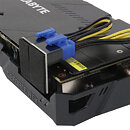
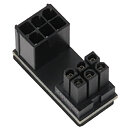
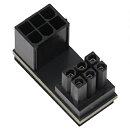
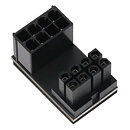
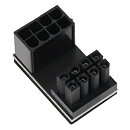
29 Comments on Ainex Releases Ingenious GPU Power Cable Hider Adapter
"we will likely see resellers or copycat products in the coming months" i hope that was sarcasm...
www.moddiy.com/products/GPU-VGA-8Pin-6Pin-PCIE-U-Turn-180-Degree-Angle-Connector-Adapter-Board.html?setCurrencyId=6
www.amazon.co.uk/Female-Degree-Adapter-Desktops-Graphics-8PIN-2/dp/B07P5R258Q
For what it's worth, I originally found out about them on an overclock.net forum thread from 2015 so they're not exactly "new" or "innovative" and every variant of them I've ever seen looks absolutely identical, right down to the foam backside. This time though, they've sprayed (or photoshopped) the manufacturing markings off the PCB so that you can't just search for them on aliexpress and buy two for $3.
For anyone interested, Google "PH38 adapter"
If I had to use one, I'd look for a brand name with a quality build.
though i'll agree a full melt down is highly unlikely i still wouldn't be surprised if someone gets sticky cables.
go buy a PSU from diablotek (or grab one out of some prebuilt) and then one from super flower, seasonic - almost anyone. then tell me there isn't a difference. and with enough PSUs that don't have proper OCP/OVP on the market; cheap 110c rated insulation isn't hard.
and the hyperbole of "your card's on fire" can stop. i have a 980ti with a temp sensor on the backplate, right by my power connections and it hit 85c+ at stock settings ~1320 @ 1.19v with and stock cooler. i start cranking up the voltage to 1.23 and it starts tapping 95c.
go read some 3090 reviews; those back plates are burning peoples' hands. then start babbling about fires . . . :shadedshu:
B) 85C is definitely not 100, and if the actual backplate (not the PCB behind it) hits 95C, there is something seriously wrong with that design, as something is clearly not getting the cooling it needs. Even rear-mounted VRM components rated for 125C shouldn't be heating the backplate to temperatures that high. It might not be enough for anything to fail, but it nonetheless sounds like major shortcuts were taken in the design of that GPU.
C) Please learn to take a joke, and maybe chill out a bit?
B) no 85 isn't 100 but i did mention 95 which is much closer, eh? and really? did you not know the purpose of a back plate is to act like a heatsink for the VRMs?
news flash:
so if a back plate gets hot thats because its designed as it should. (mine has thermal tape even!)
C) dude, buh, i got so much gas - i'm totally chill. you good?
e:
actually, iirc you've been intimate with my bios . . . :eek:
If your argument is what it seems to be, which is "this is a bad idea if you're massively overvolting your GPU, the GPU has hot VRM components next to the power connector that sink into the backplate, and you're doing all of this with a dirt-cheap PSU with terrible insulation", then you're making far too much of an effort to find a problem. I mean, no, this is obviously not an idiot-proof product. Few PC components are. But your argument here goes way beyond that, into the realm of being completely unrealistic.